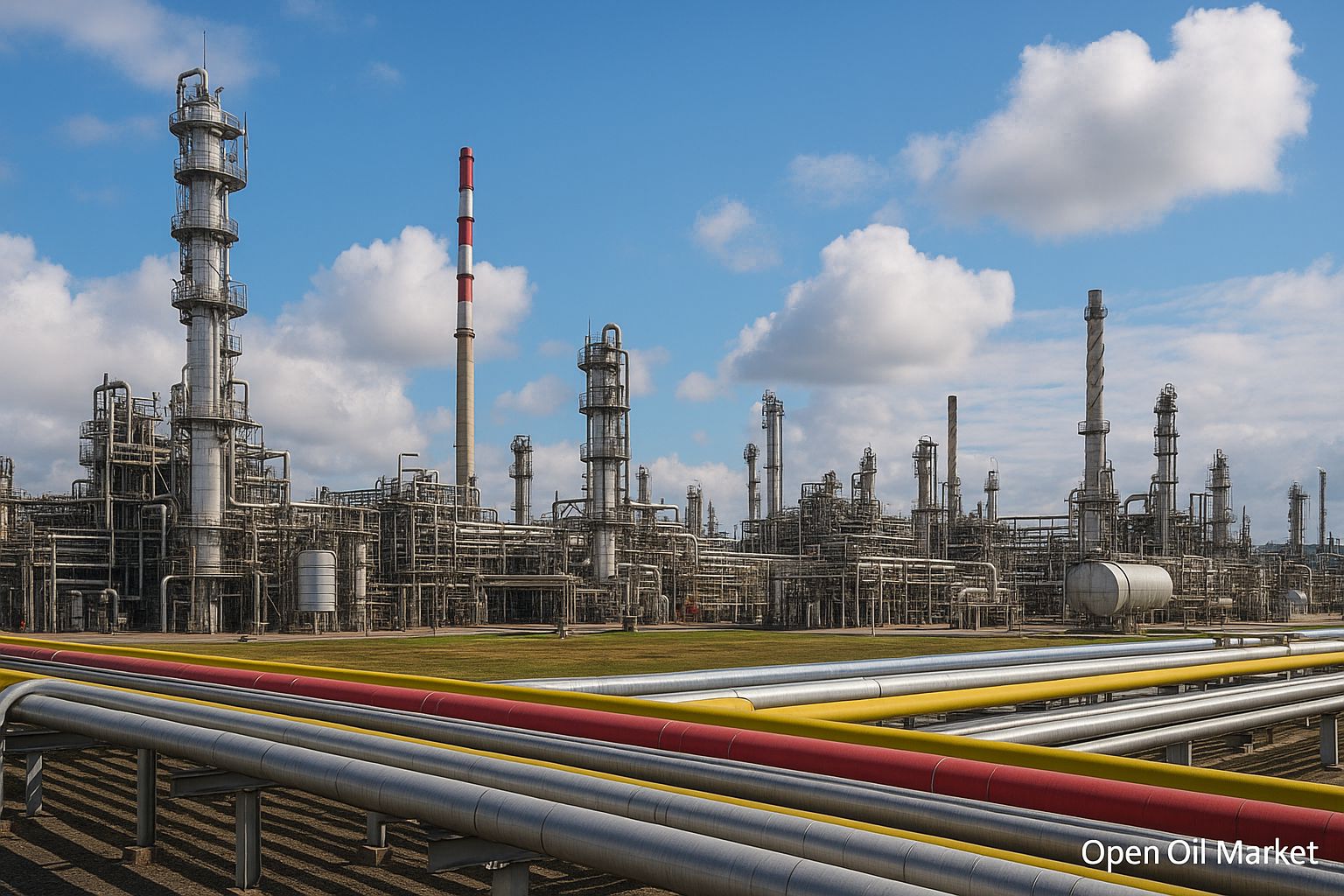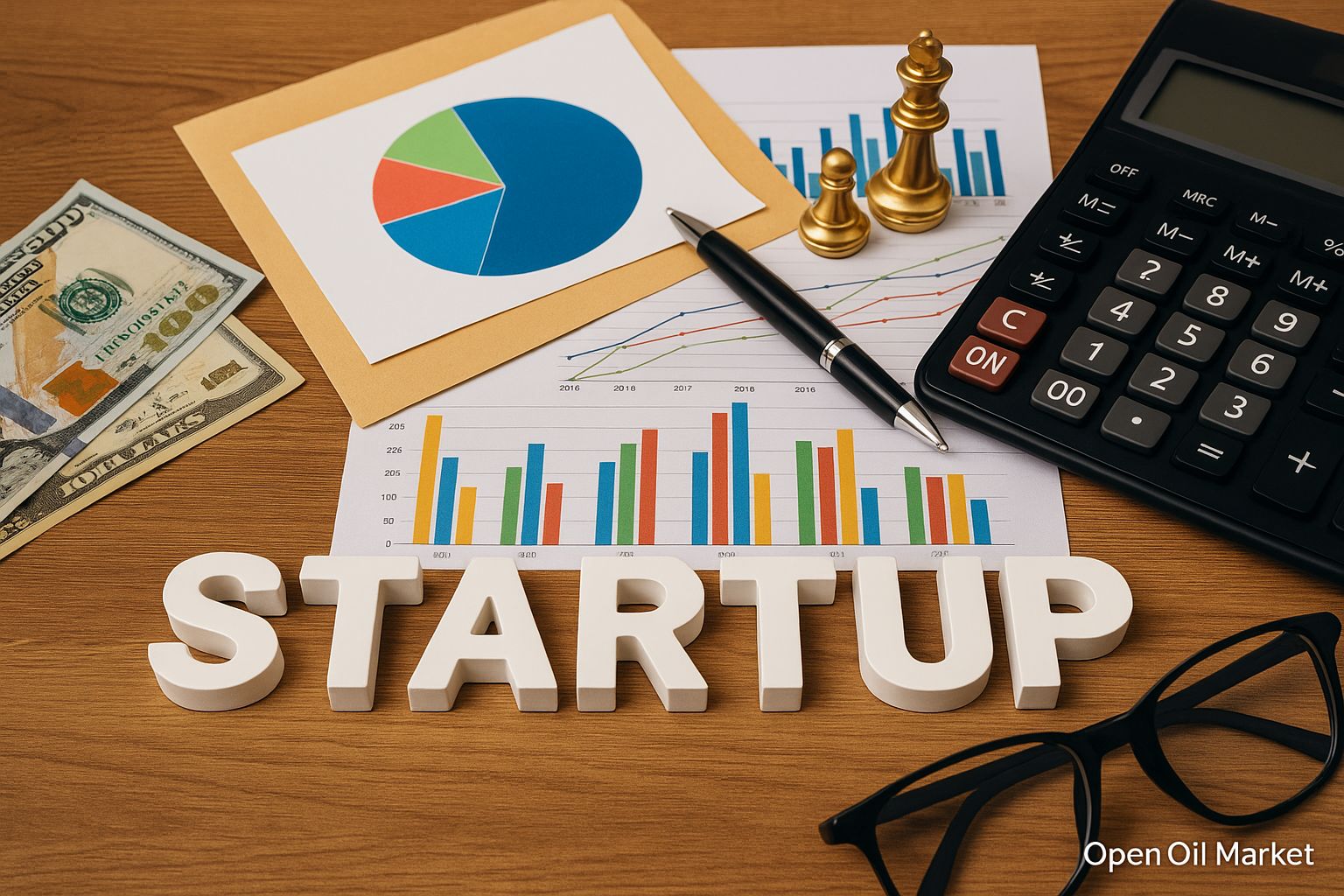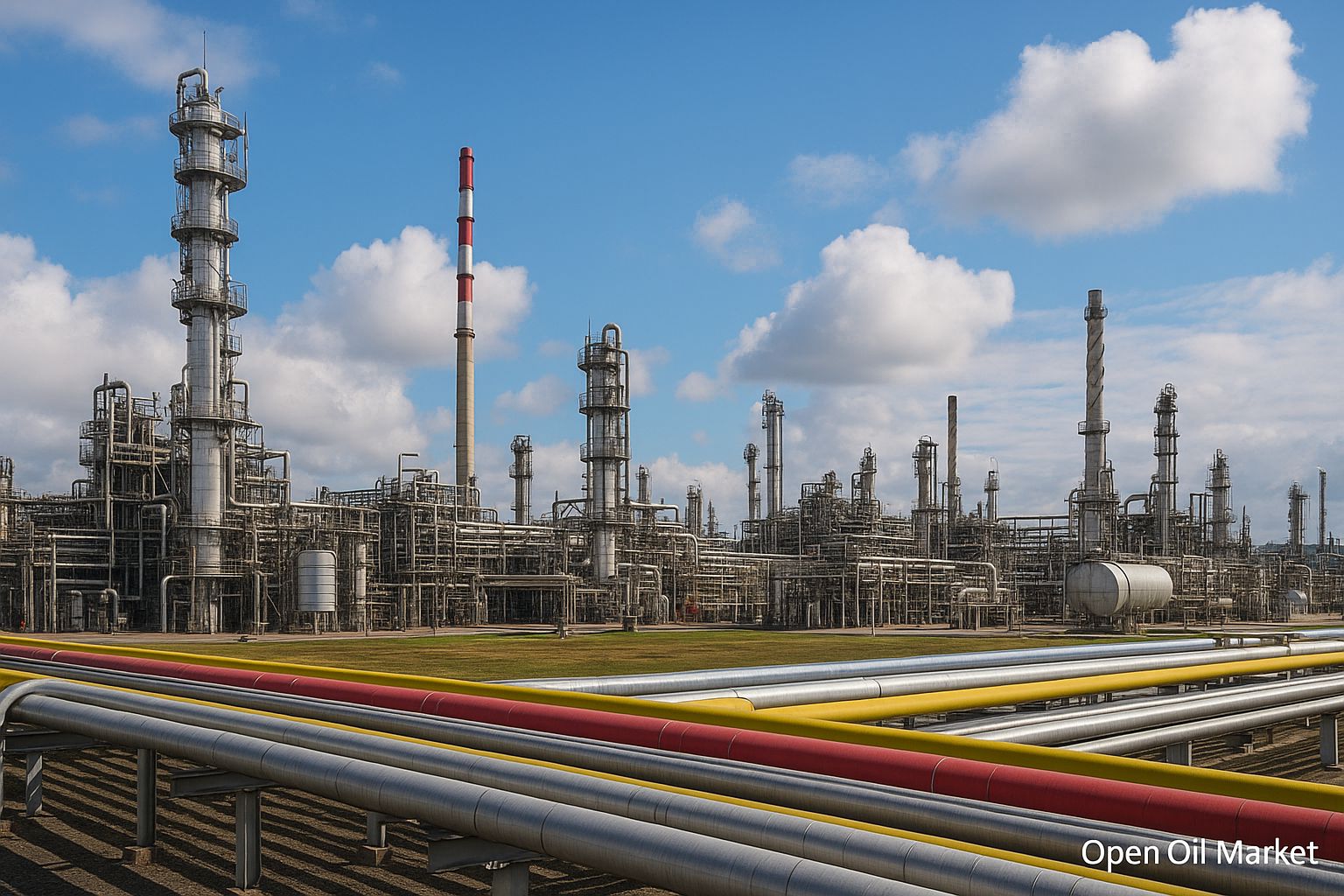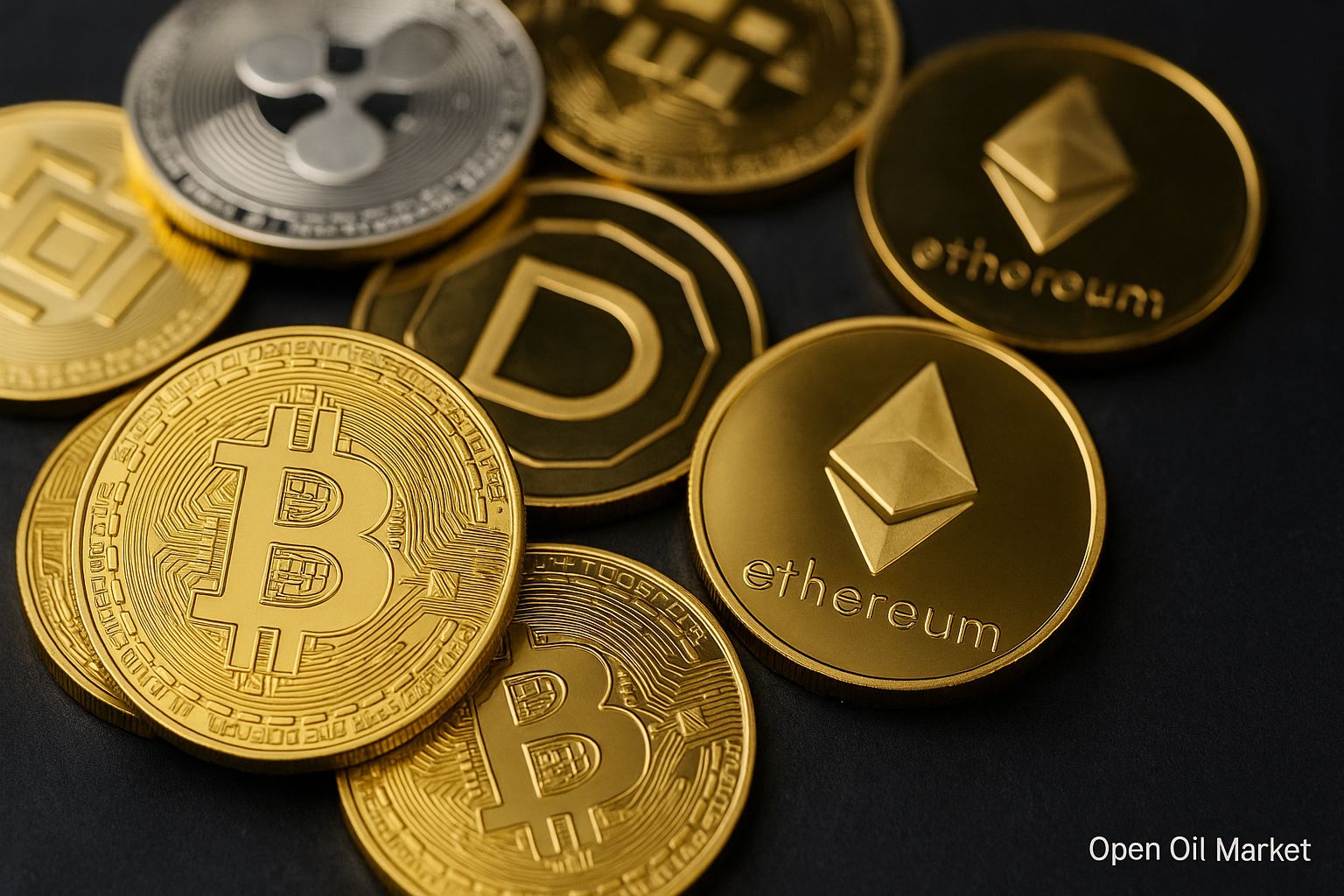
Detailed Overview of the Fuel and Energy Sector News as of August 21, 2025: Petroleum Products, Oil, Gas, Coal, and Renewables. Sanctions, Price Stabilization, Corporate Events, and Energy Security.
The current events in the fuel and energy complex (FEC) as of August 21, 2025, reflect a blend of market resilience and ongoing geopolitical pressures. Following the recent summit in Alaska, there has been no significant breakthrough in the dialogue between Russia and the United States, and the sanctions confrontation continues—moreover, Washington indicates its readiness to intensify restrictions. Nevertheless, global oil prices remain relatively stable, with Brent quotes holding around $60 per barrel, demonstrating a fragile balance between supply and demand. The European gas market continues to appear robust, with EU storage levels nearing full capacity, which supports moderate price levels ahead of the winter. The global transition to clean energy is gaining momentum: many countries are recording new highs in generation from renewable energy sources, although traditional resources are still utilized for the reliability of energy systems. In Russia, a sharp spike in fuel prices has prompted the authorities to intervene swiftly—implementing a temporary ban on gasoline exports and initiating adjustments to the damping mechanism to stabilize the domestic market. Below is a detailed overview of key news and trends in the oil, gas, energy, and raw materials sectors as of the current date.
Oil Market: Stable Prices Amid Limited Demand and Increasing Supply
Global oil prices are consolidating at relatively stable levels under the influence of fundamental factors. The North Sea Brent blend trades between $65 and $67 per barrel, while American WTI ranges from $62 to $64. Current prices are approximately 10% lower than a year ago, reflecting a gradual market correction following the energy crisis spikes of 2022-2023. Several factors continue to influence price dynamics:
- OPEC+ Production Increase: The oil alliance continues to increase market supply. In August 2025, the collective production quota for key deal participants was raised by around 0.55 million barrels per day, with a similar increase expected in September. These steps continue the trend observed in recent months—the gradual easing of restrictions since spring has led to rising global oil and petroleum product stocks.
- Slowing Demand Growth: The pace of global oil consumption remains restrained. The International Energy Agency (IEA) has lowered its demand growth forecast for 2025 to around +0.7 million barrels per day (compared to ~2.5 million in 2023). OPEC estimates demand growth at about +1.3 million barrels per day. Reasons include the overall slowing of the global economy and the effect of high prices from previous years, which encourage energy conservation. Additionally, slowing industrial growth in China limits the appetite of the world’s second-largest oil consumer.
- Geopolitical Uncertainty: The lack of progress in the sanctions dialogue creates conflicting expectations in the market. On one hand, continued stringent restrictions on Russian oil and gas dampen the activity of some traders and investors. On the other hand, ongoing negotiations between major powers slightly reduce the "risk premium" associated with geopolitical tension. As a result, oil prices fluctuate within a narrow range, lacking momentum for either a new rally or a crash.
Overall, market supply currently exceeds demand, keeping the oil segment in a state close to surplus. Exchange quotes are confidently below last year’s highs. Several analysts predict that if current trends persist, the average Brent price may drop to around $50 per barrel by 2026—though much will depend on further OPEC+ decisions and the overall global economy.
Gas Market: Europe Near Storage Capacity and Maintaining Low Prices
The gas market is primarily focused on Europe, which is confidently preparing for the autumn-winter period. EU countries are rapidly filling underground gas storage facilities: by the end of August, the filling of European UGS facilities is expected to approach the targeted 90% (initially planned to be reached only by early November). This advanced schedule provides a significant margin of safety and already mitigates risks of fuel shortages in winter. Exchange prices for gas remain relatively low: futures at the TTF hub fluctuate around €30/MWh (approximately $380 per thousand cubic meters), reflecting a balance of supply and demand.
- The Role of LNG: Active imports of liquefied natural gas are helping Europe compensate for reduced pipeline supplies. In July 2025, LNG imports to the EU reached approximately 11.3 billion cubic meters, which is 37% higher than a year earlier. Increased LNG arrivals have accelerated storage filling; however, in the future, there could be stiffer competition for LNG from Asia if the economies of APEC countries begin to accelerate.
- Stabilization of Demand: Relatively mild summer weather and energy conservation measures are holding back gas consumption growth in Europe. The industry and electricity sector in the EU have adapted to last year's high prices, reducing dependence on gas, which, coupled with full gas storage, keeps prices at a moderate level.
- Looking Towards Winter: With current reserves and fuel flows, experts expect that Europe will confidently navigate the upcoming heating season even with moderate supply reductions. However, the market continues to monitor weather forecasts and geopolitical factors (such as potential export restrictions from major producers) in case new challenges arise.
Overall, the situation in the European gas market is favorable ahead of winter: high reserves and diversified supply routes provide price resilience. This is a positive signal for European industry and energy, allowing businesses and consumers to anticipate relatively stable tariffs during the winter.
International Politics: Unyielding Sanctions and New Restrictions on the Horizon
Geopolitical tension surrounding Russian oil and gas persists. The recent meeting between Russian and U.S. leaders initiated dialogue but yielded no specific agreements, thus current sanctions remain in full force. Moreover, Western countries are signaling the possibility of tightening the pressure. Reports suggest that Washington is considering additional measures against the Russian FEC—up to sanctions against major Russian oil companies. Specifically, there are discussions of introducing restrictions against Rosneft and Lukoil to reduce Moscow's revenues and compel concessions regarding Ukraine. Simultaneously, the United States does not rule out indirect pressure on Russia's partners: earlier, the U.S. administration threatened 25% tariffs on Indian goods (effective August 27), aimed at reducing India’s imports of Russian oil, and hinted at the possibility of 100% tariffs on exports to China if Beijing does not decrease its procurement of Russian energy resources.
In Europe, new sanctions provisions adopted by the European Union in the summer are coming into force. In a recent package of restrictions, the EU approved a ban on the import of petroleum products produced from Russian oil in third countries—this move aims to close supply loopholes, but it carries the risk of increasing fuel prices in the European market. The Russian mission to the EU has already warned that such measures could lead to higher gasoline and diesel prices in Europe and impact the competitiveness of the European economy. Nevertheless, Brussels demonstrates its determination to continue applying sanctions pressure. Investors and participants in the FEC are monitoring the situation closely: any signals about the softening or, conversely, strengthening of the sanctions regime directly influence sentiments and long-term forecasts in the oil and gas sector.
Asia: India and China Balance Between Imports and Domestic Production
Asian countries continue to play a key role in the energy market, navigating external pressure and internal interests. India, facing increasing Western pressure, maintains its focus on ensuring energy security. After a temporary pause in July, Indian state companies resumed purchases of Russian oil for the fall—once discounts on Urals grades widened back to around $3 per barrel, refiners found these supplies economically attractive. This occurred despite criticism from Washington: New Delhi has made it clear that it will purchase raw materials based on national interests and price conditions. Indian refineries have already contracted batches of Russian oil for delivery in September-October and state that they will continue cooperation with Russia if commercially viable. Simultaneously, India seeks to increase domestic production and diversify sources of imports—the government is investing in new fields and infrastructure to reduce future dependence on external supplies.
China is also ramping up its energy projects; however, it remains dependent on imports to meet its gigantic demand. Beijing is enhancing production at fields in Xinjiang and other regions, investing in technologies for extracting difficult-to-reach oil and gas. Nevertheless, China remains one of the world’s largest importers of oil and gas. Despite geopolitical pressures, Chinese companies are not prepared to abandon the lucrative Russian oil: according to trading sources, in recent weeks, Chinese refineries have actively purchased no less than 15 tanker shipments of Russian oil for delivery in October-November. This indicates that even under the threat of sanctions, China continues economically justified imports. At the same time, Beijing is working to safeguard itself from external shocks: long-term contracts are being signed with various suppliers, oil reserves are being increased, and alternative delivery routes are being developed (for example, through Central Asia). This strategy allows China to balance between the need to support its internal economy with energy resources and the desire to minimize potential risks from external pressure.
Energy Transition: Growth of “Green” Generation and the Role of Traditional Energy
The global energy transition continues to accelerate, showcasing impressive achievements in renewable energy (RE). Many countries are setting records in the share of solar and wind in their energy balances. For instance, the summer of 2025 saw several days in various EU states with more than 50% of peak electricity generation coming from RE sources. In the U.S., the share of renewable generation has surpassed 25% on a monthly basis for the first time, and major energy corporations are investing in large-scale solar and wind farms. According to the International Energy Agency, by 2026, renewable sources are expected to become the largest source of electricity generation in the world, surpassing coal.
However, the rapid growth of “green” energy brings challenges for the stability of energy systems. Due to variable generation (weather dependency), renewable sources require development in energy storage systems and backup capacities. Countries are not rushing to abandon traditional generation entirely: coal and gas power plants continue to play vital roles as guarantees of uninterrupted supply during peak loads or low RE generation. Governments and companies are investing in modernizing grids and energy storage technologies to facilitate the integration of RE without risking outages. Thus, the energy transition is underway—the share of clean energy is steadily increasing, but during the transition period, traditional resources maintain significance for ensuring reliability and balance in electricity generation.
Coal: High Global Demand and Market Stability
Despite the environmental agenda, coal continues to hold a significant place in the global energy balance. Global demand for coal products remains near historical highs, primarily driven by Asia. China and India—the largest consumers of coal—although increasing their share of gas and RE, still rely on coal to meet a significant portion of their electricity and industrial needs. In 2025, only a slight decline in coal demand in China is expected (less than 1%), while some regions are witnessing slight growth. Europe has significantly reduced coal use in recent years, but the global market compensates for this with developing countries. Coal prices stabilized in 2025 after sharp jumps in the previous period: forecasts suggest that the average price of thermal coal could drop by approximately a quarter (to ~$100 per ton) compared to last year due to sufficient supply and easing speculative demand. However, coal extraction and trading remain at high levels—several new mines are being opened, particularly in Asia, to meet domestic demand. Hence, the coal sector is demonstrating remarkable resilience: even in the era of energy transition, many countries are forced to keep this resource in their energy portfolios to balance ecological goals with economic realities.
Oil Transit: Kazakhstan Redirects Exports Through Russia Due to Pipeline Emergency
A notable reshuffle in oil supply logistics has occurred in the CIS. Kazakhstan has decided to temporarily redirect all its oil exports through Russian territory—using the Caspian Pipeline Consortium (CPC) system. This step was prompted by an emergency situation on the alternative route through Azerbaijan. At the end of July, a batch of crude oil contaminated with organic chlorides from the Azeri Light grade entered the Baku-Tbilisi-Ceyhan (BTC) pipeline, which has been used for part of Kazakhstan's oil going to Mediterranean ports. The contamination led to serious issues: it is reported that the contaminated oil has reached several refineries (including one in Italy and processors in the Czech Republic), causing unplanned shutdowns. The most affected was Romania, which received about 92 thousand tons of oil with excessive chloride content in July. The Romanian government was forced to declare an energy emergency and deploy emergency reserves of oil and diesel to support its refineries and avoid fuel shortages on the market.
In this context, Astana preferred to temporarily abandon the BTC route. The entire export flow has been redirected to the CPC system, which passes through Russia to the Black Sea port of Novorossiysk. This decision will allow Kazakhstan to export raw materials uninterrupted while the Azerbaijani route is in question. Experts note that eliminating the effects of contamination in the oil pipeline is a labor-intensive process. As an expert assessed, full resolution of the issue may take about three months, including cleaning pipelines and conducting inspections to ensure the proper quality of raw materials for buyers:
Comment: "Eliminating the consequences of chloride contamination may take around three months: this involves not only work on the pipelines but also inspections that must prove the quality of the raw materials meets buyers’ requirements.” Sergey Teryoshkin, General Director of the Open Oil Market trading platform.
Source: Vzglyad Newspaper
Industry representatives emphasize that the situation with chlorinated compounds is not insurmountable—similar incidents have occurred before (notably the Druzhba pipeline incident in 2019). Contaminated raw materials are typically pumped into storage tanks or free pipeline strands, then gradually mixed with clean oil until acceptable concentrations are achieved. However, verifying and fully restoring the pipeline to normal operation takes time. While Azerbaijan addresses the contamination issues, the Kazakhstan-Russia CPC route allows minimizing export downtime. This benefits both exporters and receivers—while the Russian route handles a larger volume, the Azerbaijani side can focus on cleaning infrastructure without pressure from clients.
Russian Oil Product Market: Government Measures Against Rising Fuel Prices
The internal fuel market in Russia faced a tense situation in August, drawing significant attention from the government and industry participants. Wholesale prices for gasoline and diesel on the St. Petersburg International Mercantile Exchange hit historical highs in the first half of the month, signaling alarm for authorities and businesses. Retail prices at gas stations also began to rise, especially in remote regions. Contributing factors include seasonal demand increases, repair work at certain refineries, a weakening ruble, and the attractiveness of fuel exports amid high global prices, resulting in local shortages.
The government intervened swiftly to prevent a fuel crisis. As of August 15, a full ban on gasoline exports has been implemented (initially until August 31) to saturate the domestic market. Concurrently, Deputy Prime Minister Alexander Novak instructed the ministries of Finance and Energy to provide by September 10 the calculations for adjusting the damping mechanism (which subsidizes oil companies when there is a significant gap between export and domestic prices) retroactively from August 1, 2025. This means that financial support for refiners may be increased to make it more profitable for them to send gasoline and diesel to the domestic market rather than abroad. Officially, the authorities state that the domestic market is fully supplied with fuel, and the measures taken are aimed at keeping the situation under control.
Comment: "In new regions, fuel produced in other subjects of the Russian Federation is used. Retail companies selling gasoline and diesel include transportation costs in the final price of petroleum products. As a result, the risk of price increases in retail is rising. The Federal Antimonopoly Service (FAS) may force gas station networks to lower fuel prices, but administrative measures do not work effectively in the long term. Regulators may want to consider subsidizing fuel supply—this mechanism is de facto used in the energy market. Something similar could be proposed for the fuel market. By the end of the year, the fuel market may return to the ‘inflation minus’ format; however, next year will be challenging for oil workers: the Central Bank expects to bring inflation down to 4%, so fuel networks will have to tighten their belts." Sergey Teryoshkin, General Director of the Open Oil Market trading platform.
Source: Business FM
Experts note that administrative pressure (such as an export ban or directives for gas station networks) can only temporarily suppress prices. Much more sustainable effects can be achieved through economic methods—such as improving the damping system or targeted subsidization of fuel transportation to remote areas. The latter approach resembles practices in the electricity market, where cross-subsidization operates to equalize tariffs. In the context of potential easing inflation, there is hope that gasoline price increases will slow to a level below overall inflation (“inflation minus”); however, much will depend on the macroeconomic situation. Investors in the fuel market and oil companies are closely watching government actions: industry support in the form of subsidies and flexible tax policies can mitigate upcoming challenges, while maintaining rigid administration without compensation may lead to declining refining profitability.
Corporate News: Dividends and Projects
In the corporate sector news of the FEC—events that are of interest to investors and shareholders. The largest independent gas producer, Novatek, is holding a board meeting on August 21 to discuss the payment of dividends for the first half of 2025. Analysts have previously positively evaluated the company’s financial results, and the market expects recommendations for generous interim dividends that reflect high gas prices during the reporting period. The board's decision will be a significant signal for market participants—stable payments indicate the company's financial sustainability and may enhance the attractiveness of its shares.
Major projects continue to be implemented: Rosneft announced reaching project capacity at one of its new fields in Eastern Siberia, which will increase its oil production in the second half of the year. Gazprom reported planned expansion of LNG export supplies from the Far East, having signed a long-term contract with one of the buyers in the Asia-Pacific region. These news confirm that Russia's largest oil and gas companies are focused on growth despite sanctions limitations: new resources are being developed, export routes are diversified, and ties with partners outside Western markets are strengthened. Such corporate activity inspires optimism among investors, showing that the sector is adapting to external challenges and continuing to evolve.




